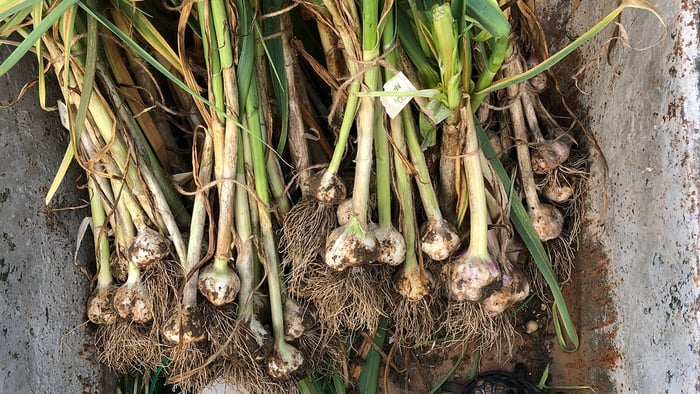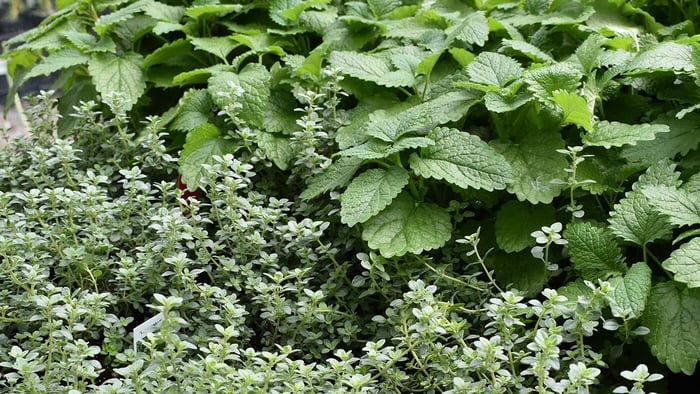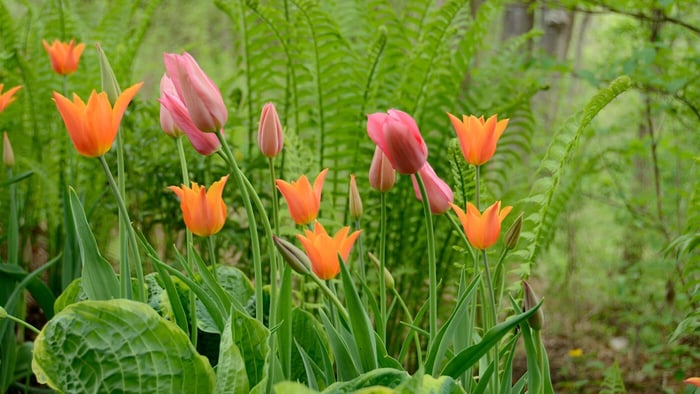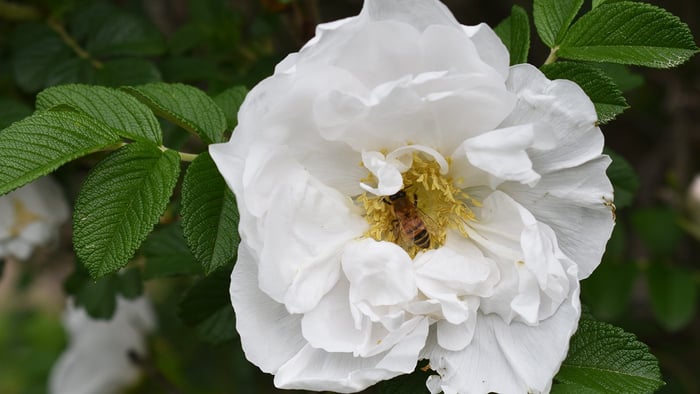
Growing Garlic in Vermont
Listen to article
Audio generated by DropInBlog's Blog Voice AI™ may have slight pronunciation nuances. Learn more
Growing garlic in Vermont is an excellent and fulfilling addition to the garden. Since you can replant from future crops, starting with quality seed garlic makes all the difference. Each garlic clove in a bulb is planted individually, which then grows into a full bulb of garlic. Cloves are planted in October or November before the ground freezes. Green shoots emerge in early spring and the plant is harvested mid-summer, around July or August.
There are dozens of types of garlic, but the plant can be classified into two categories of hard-neck and soft-neck varieties. Soft-neck types are usually available at the grocery store because of their long storage qualities. Unlike soft-neck types, hard-neck varieties produce scapes, or curlicue flower stalks, in early summer that are edible. Home gardeners in Vermont can grow both types.
There are dozens of types of garlic, but the plant can be classified into two categories of hard-neck and soft-neck varieties. Soft-neck types are usually available at the grocery store because of their long storage qualities. Unlike soft-neck types, hard-neck varieties produce scapes, or curlicue flower stalks, in early summer that are edible. Home gardeners in Vermont can grow both types.

Plant in Fall
Plant garlic a few weeks before the ground freezes solid in October or so. Cloves will establish roots while minimizing top growth prior to winter. Break bulbs apart into individual cloves. Don't peel the cloves.
Plant each clove root end down, 2" deep. Space cloves 6" apart with 9" between rows. You can water them in once.
Garlic will tolerate many soil types, but it's important to plant in full sun in a well-drained space. Mixing organic material like compost in the soil is helpful. One member of our team uses what's at hand - seaweed from the lake! Cover the planting with straw, leaves or grass clippings. This will insulate the cloves if heaving occurs during the winter.


Plant each clove root end down, 2" deep. Space cloves 6" apart with 9" between rows. You can water them in once.
Garlic will tolerate many soil types, but it's important to plant in full sun in a well-drained space. Mixing organic material like compost in the soil is helpful. One member of our team uses what's at hand - seaweed from the lake! Cover the planting with straw, leaves or grass clippings. This will insulate the cloves if heaving occurs during the winter.

Spring Care
Green shoots will emerge in early spring, usually when tulips and daffodils start appearing. Remove the mulch and water as needed. Keep the area well-weeded and apply an organic fertilizer in spring. Around June hard-neck varieties will send up their flower stalks, also called scapes. Harvest the curling scapes to enjoy roasted or in pesto. If you don't eat them, it's recommended to cut them so the plant's energy is directed toward bulb growth, versus going to seed.

Mid-Summer Harvest & Curing
Garlic can be harvested when lower leaves start to dry up and some top leaves remain green. Loosen the soil with a pitchfork, taking care not to puncture the bulbs. Gently pull the garlic up. Do a happy dance. You can brush some soil off but don't wash the garlic.
Wait to cut the tops and roots off as well. Hang in bundles to cure so bulb wrappers can form. A dry, well-ventilated area out of direct sun is ideal. A barn or open garden shed is great, a sunny greenhouse is not. Depending on the variety, curing can take 3-4 weeks.
Wait to cut the tops and roots off as well. Hang in bundles to cure so bulb wrappers can form. A dry, well-ventilated area out of direct sun is ideal. A barn or open garden shed is great, a sunny greenhouse is not. Depending on the variety, curing can take 3-4 weeks.
Storing & Enjoying
Once bulbs are cured, they are ready for storage. Cut the tops and roots off. You can peel one layer or so off so they're clean. A toothbrush is helpful to get dirt off too. Don't wash bulbs with water.
Store in netted bags or ventilated crates. Ideal storage is 55-65 degrees and 45-60% humidity. Avoid refrigerating. We recommend enjoying garlic that has a shorter storage life sooner. Purple stripes store 4-6 months, Porcelain store 6 months. Artichoke and other soft-neck types store up to a year.
Store in netted bags or ventilated crates. Ideal storage is 55-65 degrees and 45-60% humidity. Avoid refrigerating. We recommend enjoying garlic that has a shorter storage life sooner. Purple stripes store 4-6 months, Porcelain store 6 months. Artichoke and other soft-neck types store up to a year.



